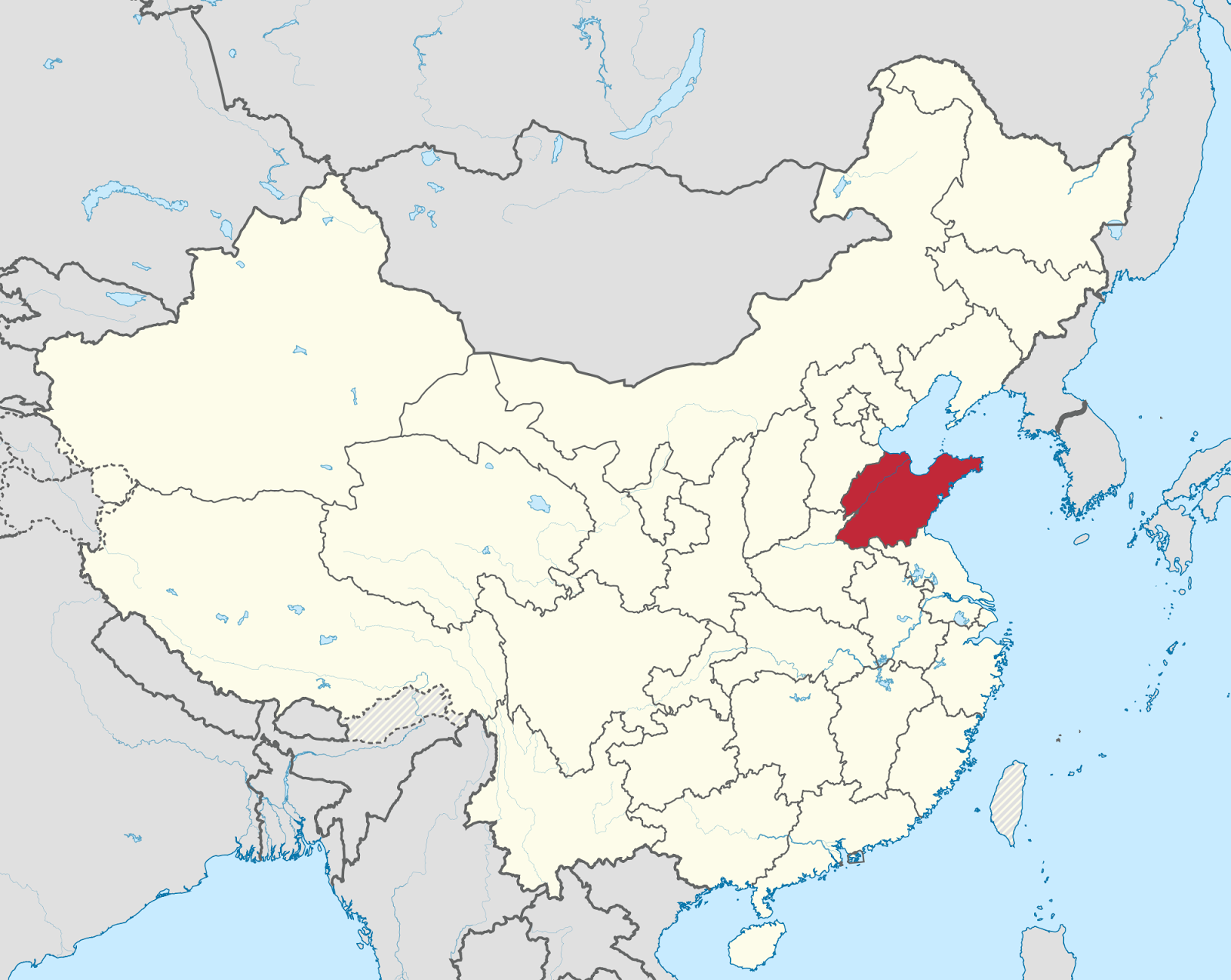This post was originally posted at The Scholars Stage on the 27th December, 2014. It has been re-posted here without alteration.
.svg.png) |
| Shandong is the red one. Map by Uwe Dedering. Wikimedia. |
Things are looking up for President Xi Jinping. Arthur Groeber sums things up well in a challenge he recently gave China File readers: “Name one world leader with a better record.” [1] Mr. Groeber has a point. All those who predicted that the Hong Kong umbrella movement would prove an impossible crisis for President Xi have been proven wrong. The protestors are gone, but Xi is still around, signing energy deals with Russia, launching new international development banks, and even shaking Shinzo Abe’s hand. He has restructured the Chinese Communist Party’s most important policy bodies, and if the recently concluded 4th Plenum Communique is anything to judge by, more reforms are coming. One domestic rival and crooked official after another has fallen to his anti-corruption campaign, which having felled 200,000 “tigers and flies” is now tearing into the once unassailable PLA. To top things off, sometime this summer Xi Jinping’s countrymen began calling him “Big Daddy Xi.”[2] The term is a compliment: President Xi is now the most popular leader on the planet.
 |
| Aesop’s portrait of Xi Jinping
“The Frogs Who Desired a King” |
For all of these reasons and more Xi Jinping is considered to be the most powerful leader China has seen since the days of Deng Xiaoping. Yet the real test of Xi Jinping’s power isn’t found on the foreign arena or in struggles to cleanse the party of graft. Grand standing on the international stage and stoking up nationalist feeling is not hard for any leader–especially in China. The attempt to centralize the Communist Party of China and purge the corrupt from its ranks is a much more impressive display, but in many ways this entire campaign is more a means than it is an end. What end? An obvious answer is that the good President pursues power for power’s sake, as leaders the world over are wont to do. But there is more to it than this. This man did not attain his high position through will-power alone. He was selected to accomplish a job that needs doing. And while the frogs may regret crowning the stork to be their king, it is worth our while to ask why the frogs desired a king in the first place. [3] In China’s case the answer is fairly simple: If Beijing does not want to see its own Japan-style “lost decade” then economic reform is needed, and it is needed urgently. Xi Jinping has been trusted with the power to reshape the Party because that is the kind of power that is needed to defeat the vested interests that stand in the way of economic liberalization.
I won’t get into a full discussion of why reform is so urgent here–if you are curious I strongly recommend Michael Pettis‘ September essay, “What Does a ‘Good’ Chinese Adjustment Look Like?” which lays out the essential points in detail. More important for our discussion is the pace and scale that these reforms take. The 2013 Third Plenum was devoted to this question; financial analysts have been abuzz ever since discussing how well the Plenum’s directives are being implemented. Of particular concern are the financial happenings at the county, city, and provincial levels. It was infrastructure spending by these governments that rode China through the recession, and that effort has left many of these governments over leveraged and left others liable for a host of non-performing loans. Reforming this system is necessary. It is also difficult, for it means slaughtering the favorite cash cows of powerful men and forcing China’s wealthy and connected to face the risk inherit in their poor investments instead of shifting losses to the state.
Any attempt to liberalize markets and end China’s financial repression must start here. By extension, any attempt to assess the power Xi Jinping has over the Party must also start here. We will know that Xi Jinping has the level of control over his country that everyone says he does when local government finances see substantive reforms.



